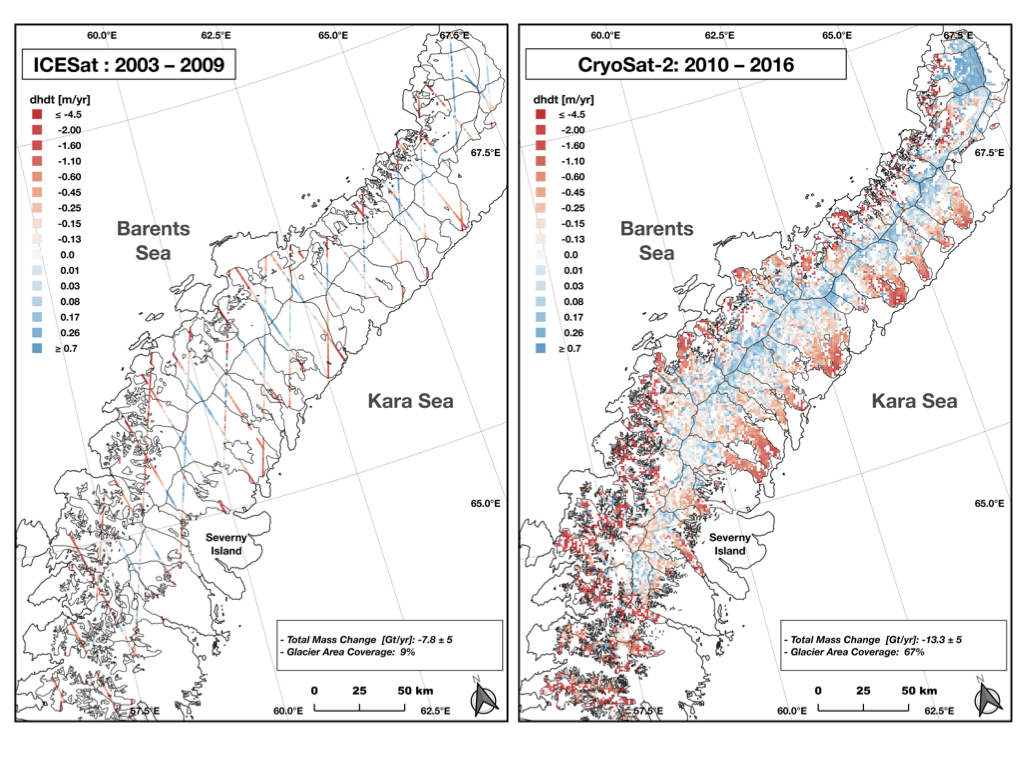Mass Balance of Novaya Zemlya Archipelago, Russian High Arctic, Using Time-Variable Gravity from GRACE and Altimetry Data from ICESat and CryoSat-2
by E. Ciracì, I. Velicogna and
T. C. Sutterley
Remote Sensing (2018)
Abstract:
We examine the mass balance of the glaciers in the Novaya Zemlya
Archipelago,located in the Russian High Arctic using time series of
time-variable gravity from the NASA/DLR Gravity Recovery and Climate
Experiment (GRACE) mission, laser altimetry data from the NASA Ice Cloud
and land Elevation Satellite (ICESat) mission, and radar altimetry data
from the European Space Agency (ESA) CryoSat-2 mission. We present a new
algorithm for detecting changes in glacier elevation from these satellite
altimetry data and evaluate its performance in the case of Novaya Zemlya
by comparing the results with GRACE. We find that the mass loss of Novaya
Zemlya glaciers increased from 10 ± 5 Gt/year over 2003–2009 to
14 ± 4 Gt/year over 2010–2016, with a brief period of near-zero
mass balance between 2009 and 2011. The results are consistent across
the gravimetric and altimetric methods. Furthermore, the analysis of
elevation change from CryoSat-2 indicates that the mass loss occurs at
elevation below 700 m, where the highest thinning rates are found. We
also find that marine-terminating glaciers in Novaya Zemlya are thinning
significantly faster than land-terminating glaciers, which indicates an
important role of ice dynamics of marine-terminating glaciers. We posit
that the glacier changes have been caused by changes in atmospheric and
ocean temperatures. We find that the increase in mass loss after 2010 is
associated with a warming in air temperatures, which increased the
surface melt rates. There is not enough information on the ocean
temperature at the front of the glaciers to conclude on the role of the
ocean, but we posit that the temperature of subsurface ocean waters must
have increased during the observation period.

This is an open access article distributed under the Creative Commons Attribution License which permits unrestricted use, distribution, and reproduction in any medium, provided the original work is properly cited.